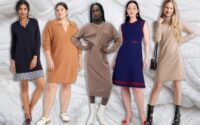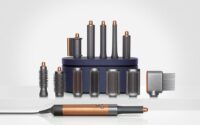Mary Quant, designer who invented the miniskirt, dead at 93
Mary Quant, the British fashion designer who popularized the miniskirt and shaped the 1960s “youthquake,” has died.
She was 93.
Her family announced the news, saying Quant died “peacefully at home” in Surrey in southern England on Thursday.
Some people also credited Quant with inventing the miniskirt, which she introduced in London in 1966.
She paired the shocking look with innovative tights and accessories.
With her unmistakable blunt bob haircut, the trendsetter also popularized hot pants among youth.
“RIP Dame Mary Quant. A leader of fashion but also in female entrepreneurship — a visionary who was much more than a great haircut,” Alexandra Shulman, former editor-in-chief of British Vogue, tweeted Thursday.
Quant’s design style was sexy and fun — and distinctly different from floral day dresses that women wore post-World War II.
She catered the miniskirt to a young audience, selecting colors and materials that would appeal to them while also keeping it affordable during the money-cautious time period.

Models like Twiggy and Pattie Boyd, who was then married to Beatles guitarist George Harrison, sported Quant’s creations.
Some of her admirers even compared her impact on fashion to the Beatles’ influence on music.
But not everyone was impressed by Quant’s daringly short styles: In 1967, The Guardian asked whether her clothes could be considered “vulgar.”
“Good taste is death, vulgarity is life,” she replied.


Quant explained that her models’ provocative poses represented the era’s sexual openness, which was fueled by the development of the birth control pill.
She was also a businesswoman who understood how to market herself in order to move into new sectors, including cosmetics, kitchenware and household accessories.
Born Feb. 11, 1930, Quant studied art education at Goldsmith’s College in London.
She then moved into fashion, first working as an apprentice to a hatmaker before trying her own designs.




Her wealthy husband and business partner, Alexander Plunket Greene, as well as accountant Archie McNair, helped Quant open her clothing store Bazaar in London in 1955.
The store popularized ready-to-wear garments at a time when fashion boutiques were all the rage.
“Snobbery has gone out of fashion, and in our shops you will find duchesses jostling with typists to buy the same dress,” Quant once said.
She called the shop “a sophisticated candy store for grown-ups.”
She opened more Bazaar stores throughout London before exporting her clothes to America, where the “British invasion” was in full swing.


